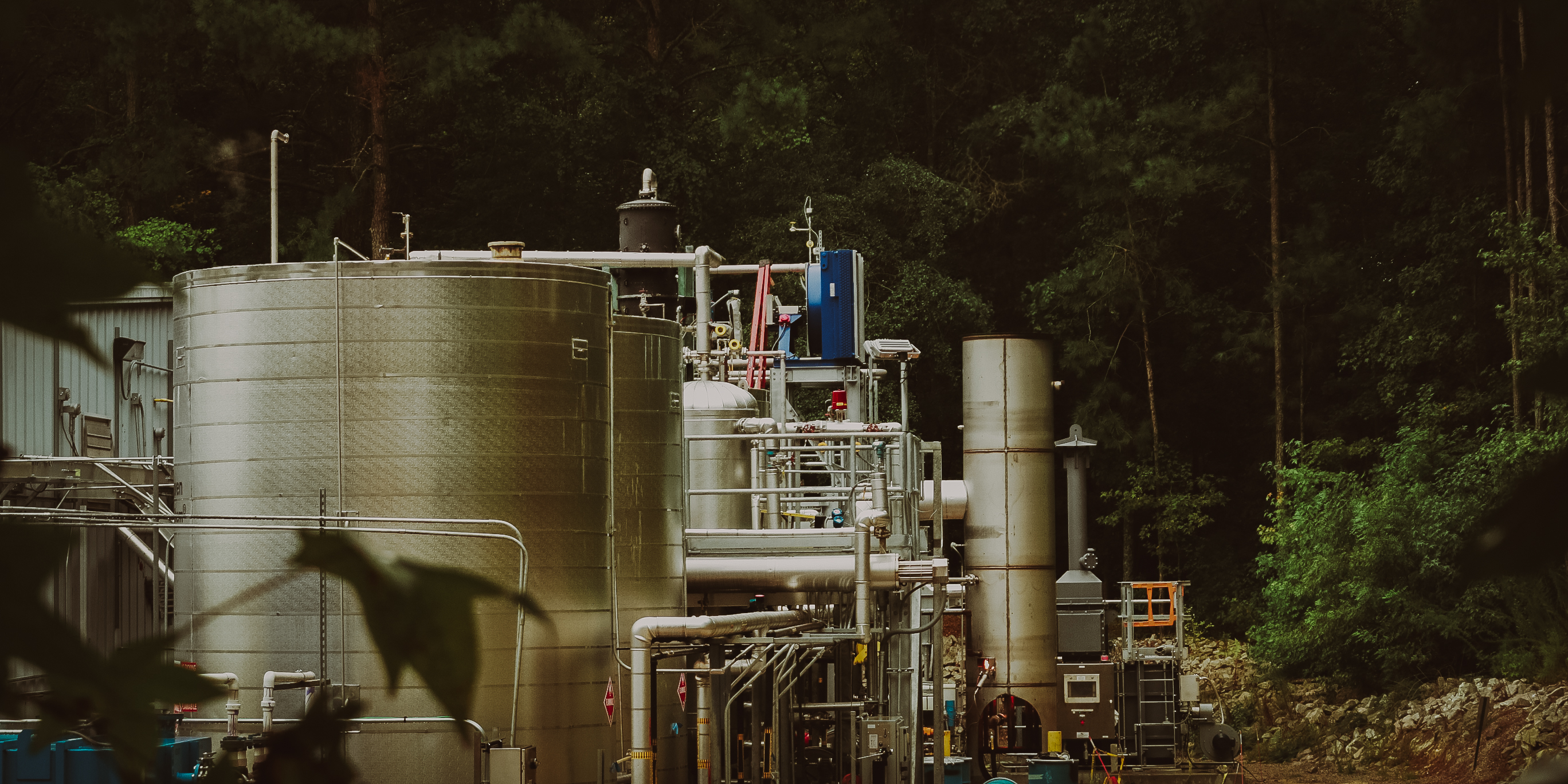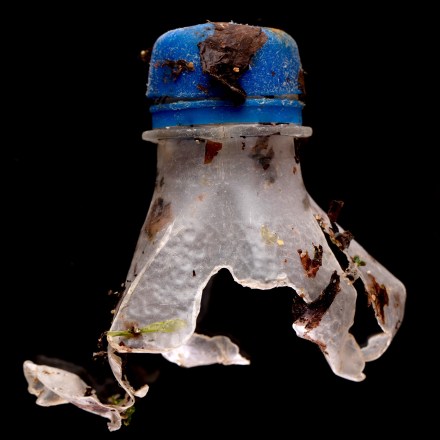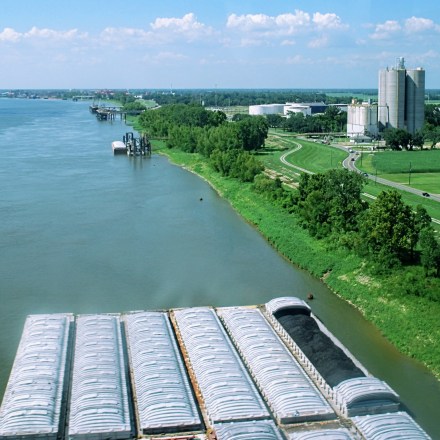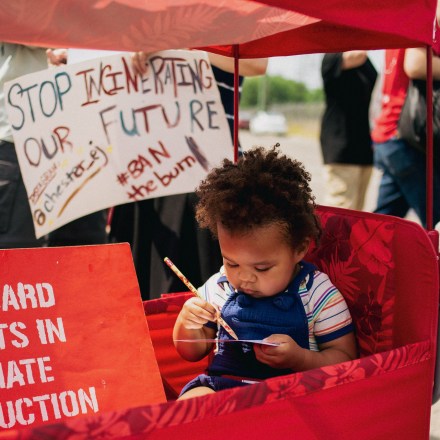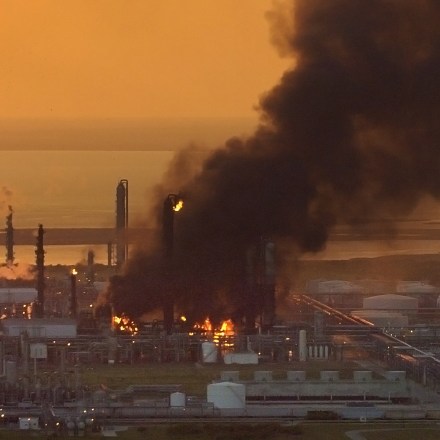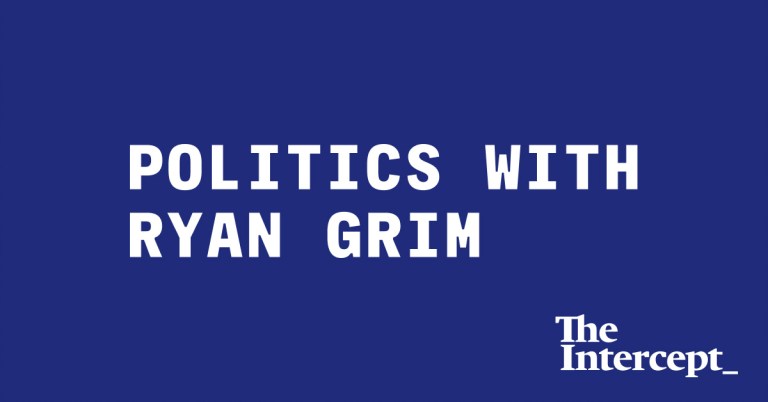Co-published in partnership with The Assembly and Carolina Public Press.
Head south on state Highway 96, past a stretch of soybean crops and tobacco fields, and you’ll arrive in Zebulon, North Carolina, population 8,665. There, on a quiet stretch of Industrial Drive, sits a nondescript commercial building. It’s easy to miss; the name on the front door is barely legible. But atop that humble three-acre lot lies a leading solution to the global plastic pollution crisis — well, according to the plastic industry.
The facility is home to the 24-hours-a-day, 7-days-a-week operations of Braven Environmental, a company that says it can recycle nearly 90 percent of plastic waste through a form of chemical recycling called pyrolysis. Traditional recycling is able to process only about 8.7 percent of America’s plastic waste; pyrolysis uses high temperatures and low-oxygen conditions to break down the remaining plastics, like films and Styrofoam, ideally turning them into feedstock oil for new plastic production.
The American Chemistry Council, the country’s leading petrochemical industry trade group, claims that chemical recycling will create a “circular economy” for the bulk of the world’s plastic, diverting it from oceans and landfills. Plastic giants have gone so far as to dub the process “advanced recycling,” but environmentalists say this is a misnomer because the majority of the plastic processed at such facilities is not recycled at all. In fact, researchers have found that the process uses more energy and has a worse overall environmental impact than virgin plastic production. Numerous companies have tried and failed to prove that chemical recycling is commercially viable.
Despite these challenges, lawmakers nationwide are now embracing the technology, thanks to a massive lobbying push from the ACC and other petrochemical groups. As of September, 24 states have passed industry-backed bills that reclassify chemical recycling as manufacturing. The change effectively deregulates the process, since manufacturing facilities tend to face less stringent guidelines than waste incinerators.
As one of only seven commercial facilities currently operating in the United States, Braven Environmental is at the vanguard of the growing chemical recycling boom. An Intercept investigation, however, found numerous issues at its Zebulon facility.
A review of meeting minutes, permit applications, and compliance documents reveals that Braven misled the public about the risks of its pyrolysis operation and has potentially endangered human health and the environment through “significant noncompliance” with hazardous waste management regulations. While the ACC has touted Braven as a sustainable success story, documents also show that much of the company’s pyrolysis oil was not converted into useful plastic or fuel — it was disposed of as highly toxic waste.
“Chemical recycling is really a greenwashing technique for burning up a bunch of petrochemicals in a new way, and it’s releasing tons of air pollutants into the environment,” said Alexis Luckey, executive director of Toxic Free NC, in an interview. “What we’re talking about is incinerating carcinogens and neurotoxicants in a community.”
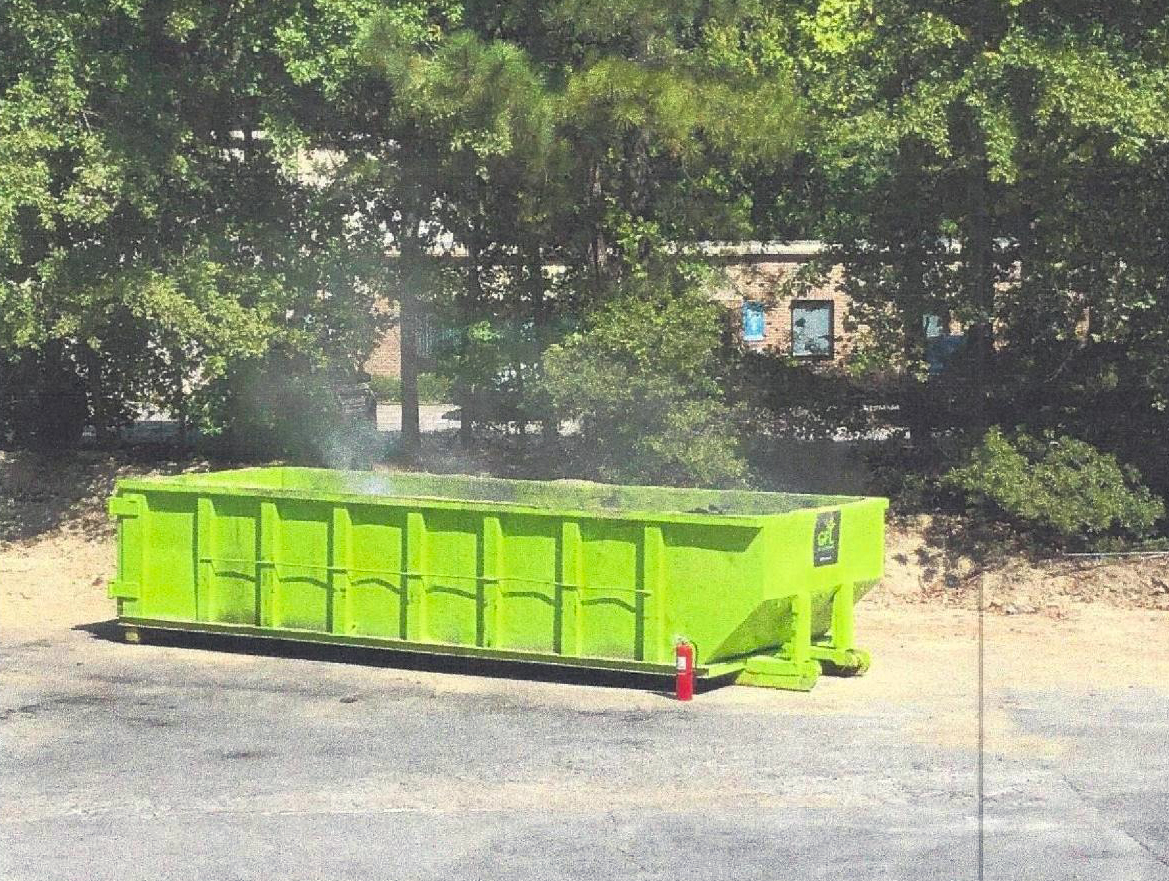
“Hazardous Items, We Have None”
On April 8, 2019, the Zebulon Board of Commissioners held a joint public hearing with the town planning board to gather community feedback on several proposed construction projects. One of the developments on the docket was from a company called Golden Renewable Energy, based in Yonkers, New York.
Golden Renewable — which changed its name to Braven Environmental in the North Carolina business registry in 2021 — was requesting a special use permit to “locate a refinery and the storage of flammable liquids” on a parcel of land zoned for heavy industry.
According to minutes from the hearing, Meade Bradshaw, former assistant planning director for Zebulon, explained that Braven must show the proposed development “will not materially endanger the public health, safety, or welfare” in order to be granted a special use permit. In response, Ross Sloane, Braven’s business development director, made a series of promises to this effect, painting the company as a safe, family-run operation.
“We’ve never had an incidence in an operation that’s been operating up in New York now for seven years,” Sloane said. “My entire family operates the machine, so I don’t want to lose sleep.”
While Sloane pointed to Braven’s operations in Yonkers as evidence of the company’s safety record, The Intercept’s review of New York State Department of Environmental Conservation records found no indication that the company’s facility in Yonkers has ever been legally permitted to conduct plastic pyrolysis activities.
An air quality permit completed on February 22, 2013, states that the facility’s function was the conversion of vegetable oil to biofuels — a far cry from advanced thermal decomposition of plastic waste. In July 2014, inspectors from the DEC visited the facility and observed plastic waste being accepted and processed without authorization. The company agreed to resolve the violations, pay civil fines, and apply for a modified permit to accept recycled plastics, but the permit was never completed. DEC staff inspected the site again in 2021 and confirmed that Golden Renewable had moved its processing equipment out of state. DEC public records did not contain any additional permit information, and the Yonkers operation is Braven’s only other facility.
Public hearing meeting minutes also show Sloane told the town that Braven does not handle any hazardous materials. “Any kind of material trash, landfill items, hazardous items, we have none,” he said. “We do not contain any kind of hazardous materials. We have nothing that goes into a drain. … It’s all biodegradable.”
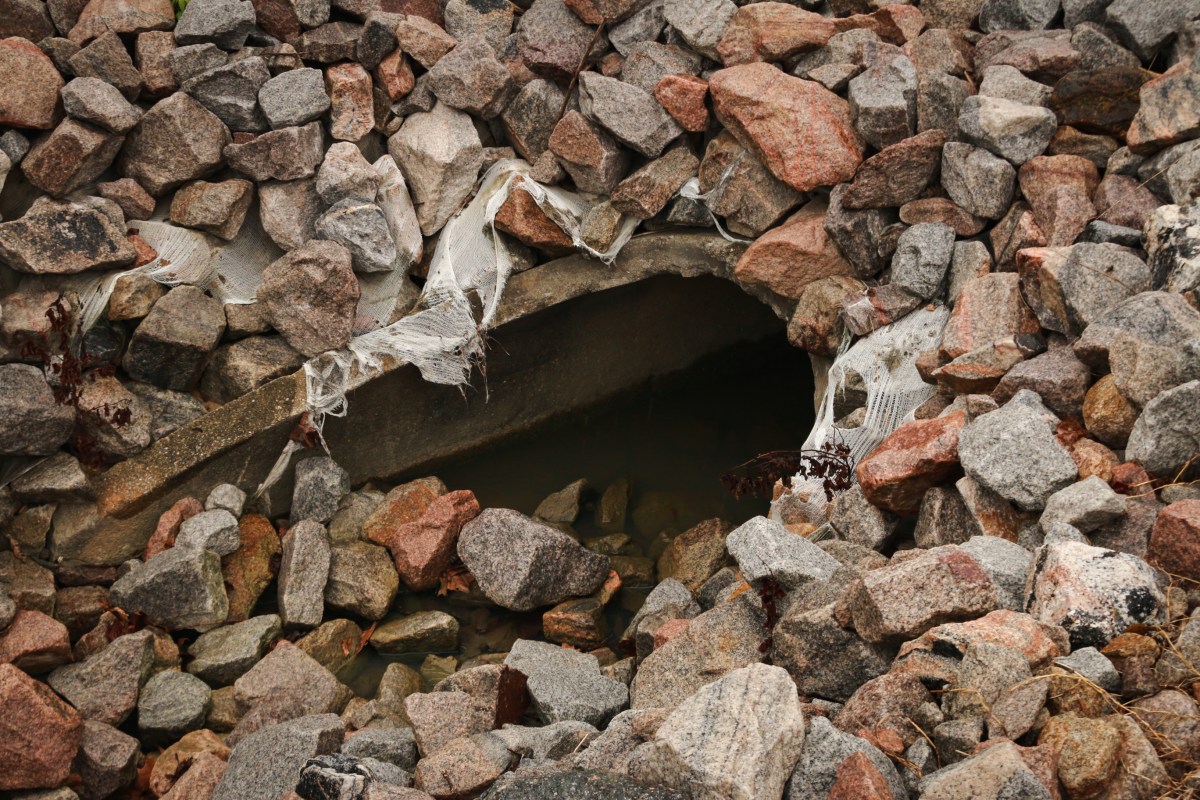
This turned out to be false. According to the Environmental Protection Agency’s Resource Conservation and Recovery Act database, Braven’s Zebulon facility generated and shipped 9.6 tons of hazardous ignitable waste and benzene in 2021 alone. In March of that year, Braven registered with the EPA as a large quantity generator: a facility that generates at least 1,000 kilograms per month of hazardous waste.
One list of warnings in a Braven air permit application reads like a toxicologist’s worst nightmare: The pyrolysis oil may cause cancer and genetic defects, as well as damage to organs, fertility, and unborn children. Other hazards included being “extremely flammable” and “very toxic to aquatic life” with “long lasting effects.”
Stephanie Hall, a parent of students at a nearby K-12 charter school, voiced concerns about air emissions during the hearing in Zebulon. She pointed out that the Braven lot would be adjacent to a community college and a public housing community, as well as only 780 feet from the charter school.
Sloane offered reassurance that Braven would “have no smells or emissions that are emitted to the air.” But when a planning board member asked for more information, he backtracked.
“It’s not a zero-emission process,” he clarified. “We do have an emission of CO2. It’s the exact same CO2 that comes through in your gas logs at your home.”
In response to The Intercept’s request for comment, Michael Moreno, Braven’s co-founder and chief commercial officer, wrote, “Braven strives to operate its Zebulon facility safely, responsibly and in compliance with its permits and regulatory requirements. Any discrepancies found are proactively resolved with the agencies involved.”
Braven’s special use permit application notes that the facility will have an exhaust stack but still characterizes the operation as a “closed loop process where all by products are fully contained without being discharged into the atmosphere.” An emissions test report prepared for Braven in March 2020 contradicts this claim, revealing that, in addition to CO2, the company’s plastic pyrolysis emits air pollutants such as carbon monoxide, nitrogen oxides, sulfur dioxide, and particulate matter. The report also found that Braven would emit an estimated 5.14 tons of volatile organic compounds per year. It did not specify which VOCs were present, though known human carcinogens like benzene and styrene are commonly found in emissions from petrochemical operations. On the day that I visited the Braven facility and adjacent lots, a faint acrid scent — like burning plastic — was detectable as far as 700 feet away.
On the day that I visited the Braven facility and adjacent lots, a faint acrid scent — like burning plastic — was detectable as far as 700 feet away.
Certain industrial facilities must annually report their chemical emissions for inclusion in the EPA’s Toxics Release Inventory. Since pyrolysis facilities are classified by the EPA as waste incinerators, they’re required to meet Clean Air Act guidelines but are excluded from TRI reporting requirements. This makes it difficult to assess the full health risks that Braven and other plastic pyrolysis units could pose to surrounding communities. In April, more than 300 environmental and public health organizations filed a petition with the EPA for the inclusion of waste incinerators in the database.
Ilona Jaspers, director of the Center for Environmental Medicine, Asthma, and Lung Biology at the University of North Carolina School of Medicine, has studied emissions generated from the burning of plastic waste. She called the TRI’s lack of pyrolysis and waste incineration data “a giant loophole.”
“I am all for finding good ways to make plastics into something usable, but the danger of generating air toxics in the process is considerable,” she said. “When we looked at the list of chemicals generated in the emissions of the plastics, a lot of it is not good. It’s kind of terrifying what gets generated when you burn plastics.”
In addition to air pollutants, residents raised the risk of potential water contamination. Hall, a professional engineer with a background in water resources, noted during the public meeting in Zebulon that the building slated to house Braven’s operations was built in 1994, so the lot would not have established stormwater control measures to treat any potential runoff. “You may want to include some sort of sand filter or proprietary stormwater device to help with any incidental spills,” she suggested, since the lot lies near a Federal Emergency Management Agency floodplain.
“When that industrial park was developed, there were no regulations for stormwater control,” Bradshaw, the former assistant planning director, told The Intercept. “Because they’re just occupying an existing building … from a site standpoint, it did not need to meet current regulations. But the commissioners, as part of the special use permit, could’ve made that a condition if they wanted to.”
At a subsequent session, the planning board unanimously recommended denial of the permit, based on “lack of evidence and testimony” showing Braven would not endanger public health and safety. But the planning board’s decision was “just a recommendation,” Bradshaw noted, and did not dictate the final decision. The Board of Commissioners unanimously voted to approve the special use permit on May 6, 2019, under the sole condition that masonry screening be conducted around the fuel tanks.
Braven was up and running by March 2020. Four months in, one major company had already bet big on the nascent operation’s long-term success: To further its “corporate responsibility” goals, Sonoco agreed to deliver its waste plastics to Braven for the next 20 years.
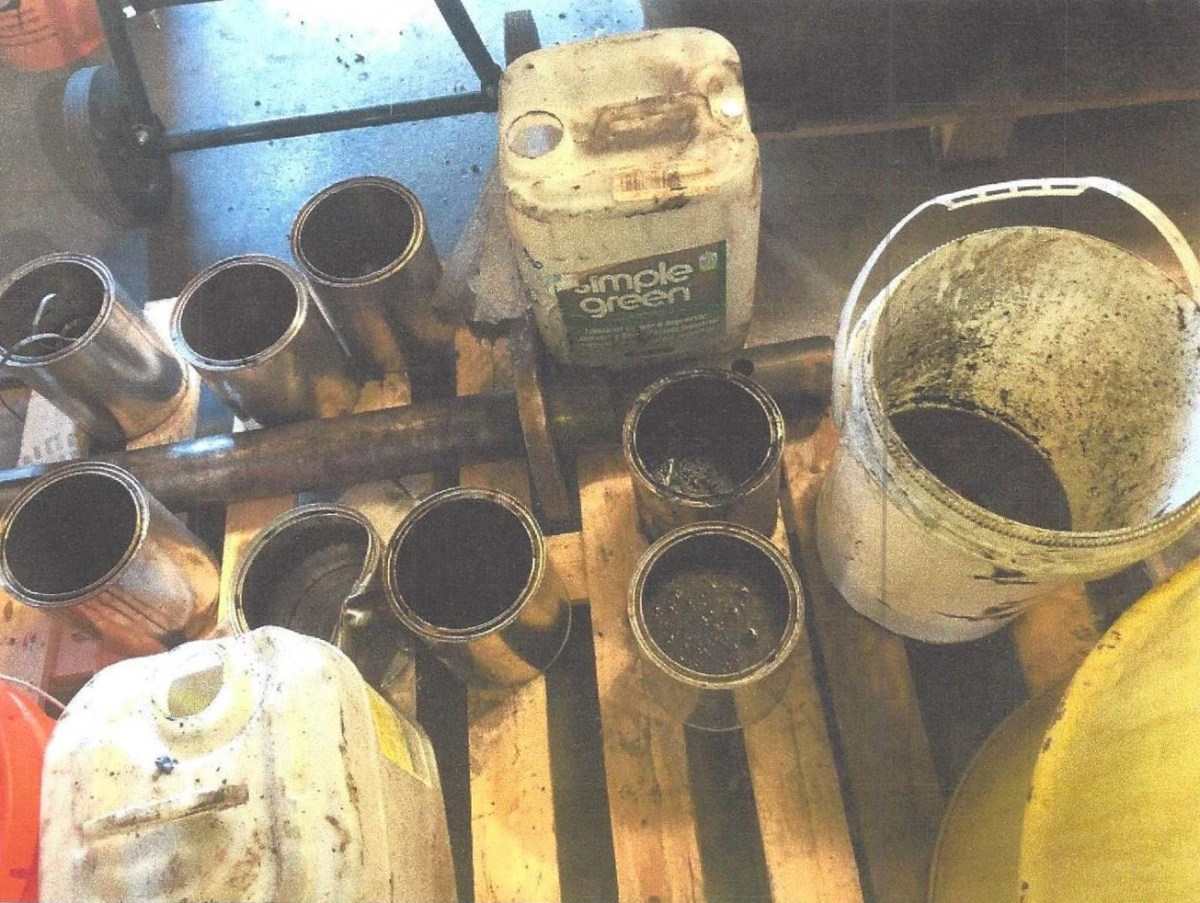
On Sept. 26, 2022, inspectors visited the Braven site and photographed gallons of pyrolysis oil. “These containers were open and were not marked with the words ‘hazardous waste,’ an indication of the hazards of the contents or an accumulation start date,” inspectors wrote.
Significant Noncomplier
As part of an unannounced hazardous waste compliance inspection, an environmental specialist from the North Carolina Department of Environmental Quality, or DEQ, visited Braven’s Zebulon facility on September 26, 2022. The details of the resulting compliance report paint an alarming picture of a business operating in stark contrast to the health and safety promises made to Zebulon residents three years prior.
Inspectors cited Braven for numerous regulatory violations, including accumulating more than 400 containers of hazardous waste without a permit over the course of two years, as well as failing to “manage waste material in a manner to prevent it from discharging to the ground and storm drain system.”
The report details one incident in April 2022, when Braven sent 31,080 gallons of hazardous waste to a rented warehouse facility about one mile down the road. The transfer was conducted by a local trucking company, not a licensed hazardous waste transporter, and the warehouse was not permitted to receive such waste. The containers, which contained toxic chemicals like toluene and ethylbenzene, were then disposed of by a waste management service, though the transportation manifests for the disposal contained numerous inaccuracies.
The report also states that Braven generates light, medium, and heavy cut oils through plastic pyrolysis but has been unable to find a buyer for the heavy cut oils. As a result, the oil accumulated in a tank until it was eventually discarded as hazardous waste — twice. “The facility has been unable to demonstrate that it has been or can be legitimately used or recycled,” inspectors wrote.
“It’s an open question for a number of these facilities what it is they’re actually producing and what it’s used for.”
“There’s very little actual monitoring data from these facilities that are doing plastic pyrolysis,” Veena Singla, a senior scientist at the Natural Resources Defense Council, told The Intercept. “It’s an open question for a number of these facilities what it is they’re actually producing and what it’s used for.”
Even Braven’s purportedly recyclable products pose substantial risks. In June 2021, Braven announced a “long-term agreement” to supply pyrolysis-derived oils to Chevron Phillips Chemical. The press release did not state outright what the oil will be used as feedstock for, stating only that it will help Chevron “achieve its circularity goals.” However, ProPublica reported in February that one Chevron refinery in Mississippi is turning pyrolysis oil into jet fuel; according to EPA documents, air pollution from the fuel production process could subject nearby residents to a colossal 1 in 4 cancer risk.
The Intercept confirmed that some of the pyrolysis oil at this Chevron facility is indeed supplied by Braven: The chemical name and unique registry number listed in an EPA record obtained by ProPublica matches the details of Braven’s pyrolysis oils found in a North Carolina air quality permit exemption application. Additionally, in July 2022, the EPA published notice in the Federal Register of several new pyrolysis oils manufactured by Braven, including the same one on the EPA record.

Some residents within one mile of Braven were already at an increased risk for environmental carcinogens before the business moved in: One nearby census tract has worse particulate matter and ozone exposure, hazardous waste proximity, and air toxics cancer risk than over 90 percent of the country.
During the town hearing, Sloane had emphasized Braven’s “proactive” safety features; the special use permit application promised “daily inspections.” The compliance investigation, however, noted numerous deficiencies in emergency preparedness, including the absence of a fire extinguisher in the main room where containers of flammable waste were accumulating, some of which were left open and unlabeled.
According to the report, Braven staff admitted that personnel had not conducted weekly inspections, and they were unable to provide documentation that an engineer’s certification had been completed for a hazardous waste tank. Neither safety data sheets for the pyrolysis oils nor an emergency contingency plan had been completed with all required information, and the plan had not been distributed to local emergency authorities.
Additionally, inspectors observed during the visit that oil-contaminated stormwater was being pumped from a containment pit into a storage tote, but the connecting hose was leaking and “dark staining was evident” on the paved area between the pit and the storm drain.
Christopher Serrati, Braven’s manager of operations, told inspectors at the time that the concrete surrounding the storm drain had been “power washed in the past to remove staining.” The report noted an absorbent sock had been placed around the storm drain, and dark staining was present on soil adjacent to the property’s stormwater outfall, indicating hazardous waste may have been discharged to the ground.
Following an assessment period, the North Carolina DEQ cited Braven as a “significant noncomplier” and issued the company an “initial imminent and substantial endangerment order” on April 28, 2023. Braven has not received any state or federal penalties.
“This is an ongoing state lead enforcement matter, and EPA is currently not involved. EPA cannot further comment regarding the facility’s compliance or enforcement activities,” wrote an EPA spokesperson.
As part of a spill remediation plan, the DEQ required that Braven test both stormwater and soil from the contamination sites. Four of the contaminated stormwater samples tested positive for high concentrations of benzene, according to a report submitted to the agency in January. The report notes, however, that Braven believes the high benzene levels can be attributed to oils that were left in the sampling totes.
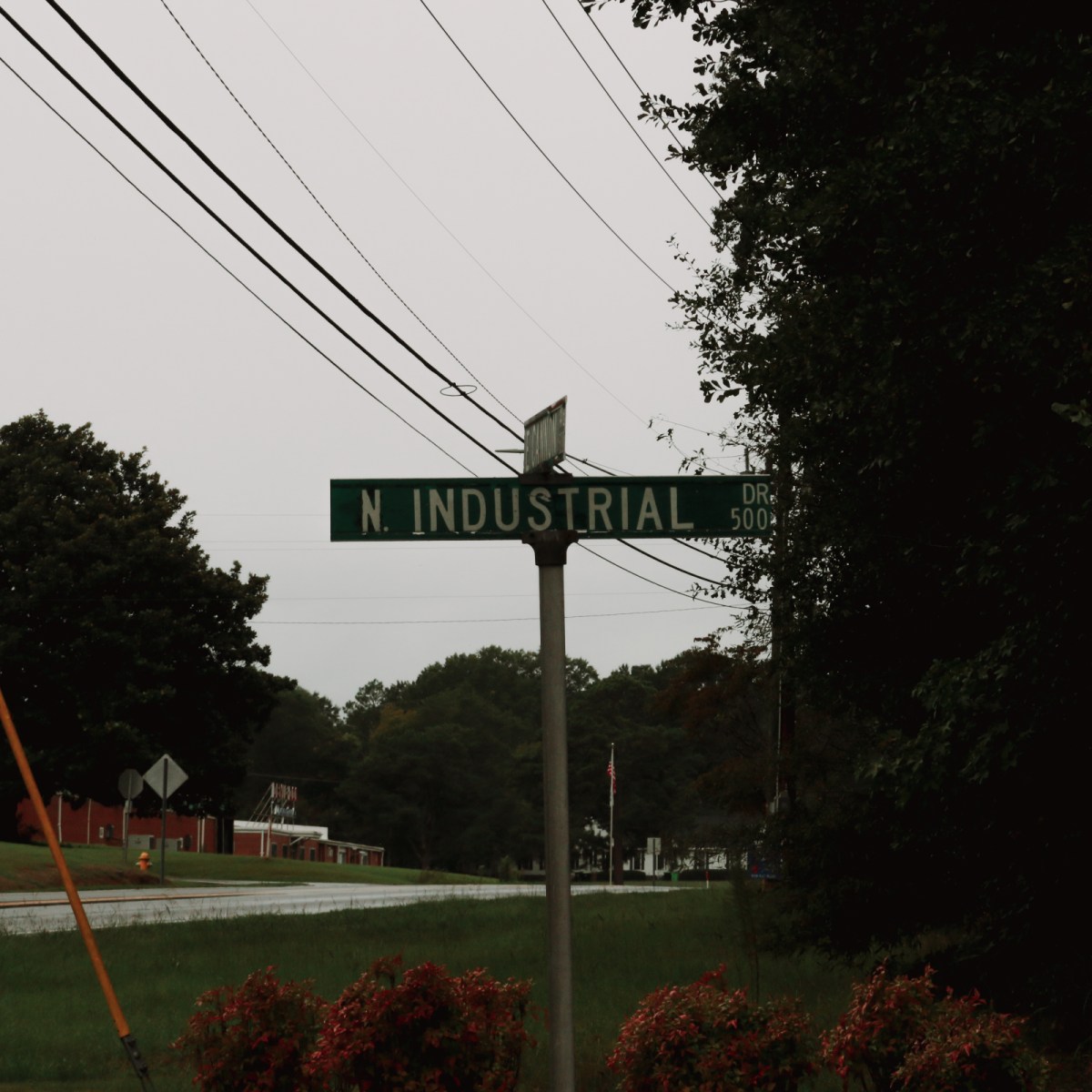

Top/Left: Braven Environmental received a special use permit to store flammable liquids on Industrial Drive in Zebulon, N.C. Bottom/Right: Birds sit atop a water tower in downtown Zebulon, N.C. Photos: Schuyler Mitchell/The Intercept
“In the past, all waste including dike water was shipped as hazardous waste and therefore, our crew did not realize the new operations and they inadvertently used the old empty oil totes for dike stormwater storage,” wrote Braven. The report states that going forward, “Braven will use only clean totes to store dike stormwater, if any, to avoid any potential hazardous waste conditions for the stormwater totes.” Braven has also installed an oil/water separator for stormwater discharge.
However, Braven’s claim that contaminated stormwater had previously been disposed of as hazardous waste appears to contradict notes in the initial compliance investigation. “Records dated April 2022 documenting shipment of rainwater … were provided after the inspection and document the material was previously disposed of as non-hazardous,” inspectors wrote.
Singla, of the Natural Resources Defense Council, called the storm drain discharge a “big concern.”
“We know that when there’s spills or leaks from industrial facilities, benzene can contaminate surface water, groundwater especially,” Singla said. “If there’s any built environment over that groundwater, the benzene can migrate up through the soil into indoor spaces and then contaminate the air, and people can be exposed that way.”
Another report submitted by Braven in June notes “site-specific groundwater investigations have not been conducted,” though a contractor completed a reconnaissance survey of potential “wells, springs, surface-water intakes, and sources of potable water” within 1,500 feet of the facility and did not observe any apparent water supply wells. The contractor said it also contacted the county for more information on potential water sources in the area but did not receive a response.
In late August, a new remedial action oversight report was posted to the DEQ’s public records database. A state chemist’s review of Braven’s soil samples found “evidence of elevated hexavalent chromium and arsenic” in the site’s underlying soil. The state’s report attributes these findings to “a release of waste,” since the results were above the levels found in background samples. Both arsenic and chromium are considered occupational carcinogens by the Centers for Disease Control and Prevention.
The state offered Braven two remediation options: complete additional sampling and remove the contaminated soil, or close the impacted areas as a landfill. According to Melody Foote, a public information officer from the DEQ’s Division of Waste Management, Braven completed the additional sampling in late September. The DEQ is waiting for the sampling results and findings report, which is expected in three to four weeks.
Zebulon Commissioner Shannon Baxter called the noncompliance report “extremely disturbing” and noted that the public hearing testimony given in 2019 “appears to be in conflict with how Braven is actually operating.” Baxter was previously a member of the planning board and recommended denial of Braven’s permit in 2019. She noted that her views should not be interpreted as representative of the entire Board of Commissioners.
“I had my concerns as a member of the Planning Board, which is why we voted to recommend denial of the Special Use Permit,” Baxter wrote in a message to The Intercept. “Now, as a Commissioner, I am troubled about how these violations will affect the safety of our Community, especially the students attending school down the road from the Braven facility.”
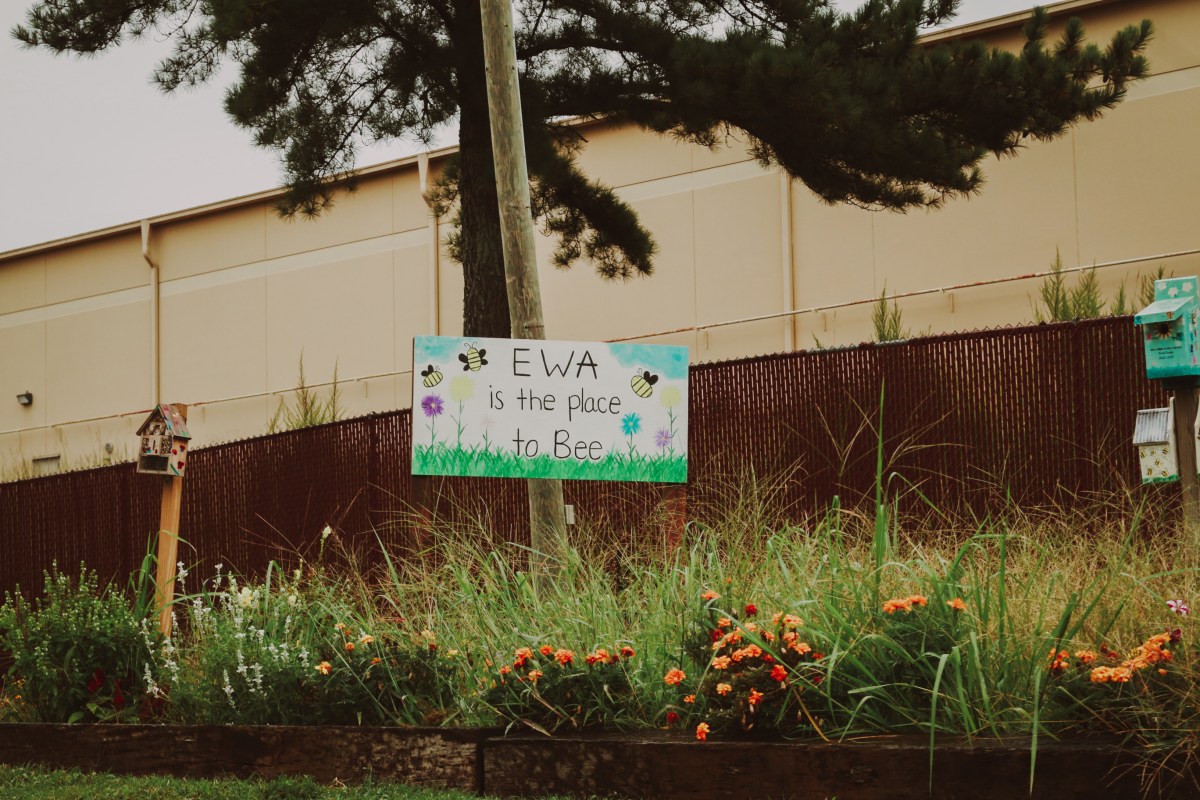
Aggressive Expansion
A troubled record hasn’t deterred the petrochemical industry from throwing its weight behind Braven in recent months. The company has announced three major executive hires since April, including a chief operating officer, development director, and president and CEO. Heath DePriest, the new COO, previously served in leadership positions at Phillips 66, a petroleum company. A press release notes that CEO and President Jim Simon held roles at the refinery subsidiary of Koch Industries.
In June, Braven announced a new “strategic framework agreement” with another Koch Industries subsidiary, Koch Project Solutions, to “support Braven’s aggressive expansion plans.” The press release cited a new project to be built in the Gulf Coast region, which will allegedly produce 50 million gallons of pyrolysis oil per year.
Braven’s past expansion plans, however, have not materialized. In 2020, the company was the subject of a number of splashy headlines for its plans to invest $32 million in Cumberland County, Virginia, a rural region west of Richmond. Promising the creation of more than 80 new jobs, the project marked the first economic development opportunity for the county since 2009. Braven was slated to break ground in late 2021, but the year quietly came and went, until a sole public update arrived via an article in a Cumberland County newspaper: “Braven No Longer Coming.” The article, published in January 2022, did not explain why Braven had pulled out, and the company declined to comment at the time.
Braven has also been the subject of several legal actions. In 2015, sisters Joan Prentice Andrews and Jane Prentice Goff filed a lawsuit against Golden Renewable in New York, which also named four executives, including co-founders Moreno and Nicholas Canosa, as defendants. The suit claims that the sisters had collectively invested a total of $650,000 in Golden Renewable’s “bio-energy business” after Canosa had given the false impression that the company was “imminently signing a contract” to sell its biofuels to the Pentagon. The suit’s charges included wire fraud, mail fraud, and violations under the Racketeer Influenced and Corrupt Organizations Act. The case was settled out of court and voluntarily dismissed less than one month after the defendants were summoned.
The following year, a New York court ruled that Golden Renewable owed a different plaintiff over $10,000 in a civil debt lawsuit. The company was also released from a New York state tax warrant in 2018 after paying an outstanding balance of $16,522. In January 2020, Moreno was released from another New York tax warrant along with his wife, totaling over $300,000. After stepping down as Braven’s CEO in April, Canosa remains on the company’s board of managers. Moreno currently still serves as Braven’s chief commercial officer.

In April, Braven announced it had completed a financing round led by institutional investors Fortistar, Arosa Capital, and Avenue Capital, where Moreno also serves as senior managing director. While Fortistar and Arosa have investments in the energy sector, Avenue backs businesses in financial distress — or as it calls them, “good companies with bad balance sheets.”
But any bad balance sheets that Braven might have are unlikely to dissuade the numerous major petrochemical companies now banking on chemical recycling. Last year marked the ACC’s highest lobbying spend on record, up to nearly $20 million. That same year, the group shelled out more than $265,000 for Facebook and Twitter ads focused on promoting chemical recycling. One ACC ad effort included the sponsorship of a promotional video specifically for Braven, which features Canosa and Moreno alongside the ACC’s associate director of plastics sustainability.
Dow, Shell, and Chevron have all invested in developing their own plastic pyrolysis technology, while Exxon Mobil launched one of the largest chemical recycling plants in North America earlier this year, the first of 13 facilities it says it will launch by the end of 2026. Worldwide, the advanced recycling market is projected to grow by 3,233 percent in less than a decade, from $270 million in 2022 to more than $9 billion by 2031.
As chemical recycling spreads, we know from existing studies that the facilities are most likely to harm communities that are already vulnerable and marginalized.
“We found that these facilities are commonly sited in places where the surrounding community is disproportionately low income, or disproportionately people of color, or both.”
“We found that these facilities are commonly sited in places where the surrounding community is disproportionately low income, or disproportionately people of color, or both,” said Singla, who authored a report for the Natural Resources Defense Council on the environmental justice impact of chemical recycling.
Meanwhile, North Carolina could soon become the 25th state to take up the reclassification of chemical recycling. In April, three Republican state Senators introduced Senate Bill 725, which would amend the state’s waste management laws to explicitly note “solid waste management does not include advanced recycling.”
Braven, the only advanced recycling facility in North Carolina, was already exempt from obtaining a solid waste permit, according to Foote, the public information officer. Foote told The Intercept that since Braven processes “recovered material” — defined in state laws as “material that has known recycling potential, can be feasibly recycled, and has been diverted or removed from the solid waste stream” — it is not regulated as “solid waste.”
There has been one recent development that could slow chemical recycling down. In June, the EPA unveiled new proposed rules under the Toxic Substances Control Act that would establish reporting requirements for 18 substances derived from plastic pyrolysis. The agency would require companies to submit their chemical feedstocks for review so the agency can screen them for “impurities,” including PFAS, dioxins, heavy metals, bisphenols, and flame retardants.
The public comment period ended on August 19. The EPA is currently reviewing responses and is targeting early next year for follow-up action, according to a spokesperson.
The ACC, American Petroleum Institute, and Dow were among those who submitted comments urging the EPA to withdraw the proposed new rules.
“The ACC would welcome the opportunity to meet with EPA leadership to clarify misconceptions about advanced recycling,” the ACC wrote, “and invite Agency officials to an advanced recycling facility for a first-hand sense of their operations.”
In response to The Intercept’s request for comment, Ross Eisenberg, president of America’s Plastic Makers from the ACC’s Plastics Division, wrote in a statement, “Progress towards a circular economy can only be achieved with smart, cohesive approaches that avoid inconsistent and conflicting approaches by regulators. … ACC remains committed to working with EPA as a constructive stakeholder in the development of effective, practical, and responsible policies.”
Braven already appears to be pulling from the ACC’s playbook in its efforts to curry favor with state lawmakers. Democrat Deborah Ross, who represents the North Carolina congressional district that includes Zebulon, made a trip to Braven’s facility on August 25.
“I enjoyed meeting and learning from Braven’s innovative leaders and employees this morning in Zebulon,” Ross is quoted as saying in a Braven press release. “I look forward to applying the insights and information I gained during my visit to the important discussions in Congress about advanced recycling technologies.”
The Intercept emailed the compliance report to Ross’s office and asked whether Braven had mentioned the inspection and ongoing remediation efforts before, during, or after the representative’s visit.
“Congresswoman Ross does her best to accommodate invitations she receives from constituents and visits dozens of businesses in her district every year — these tours and constituent meetings should never be interpreted as expressing support for any particular company’s policy positions or business practices,” wrote a spokesperson. “She was not aware of this investigation before touring Braven, nor was it discussed during or after her visit. As a vocal supporter of environmental protections, she takes these allegations seriously and strongly supports NC DEQ’s work to hold companies in our state accountable for harmful waste or activities that threaten our people and our environment.”
